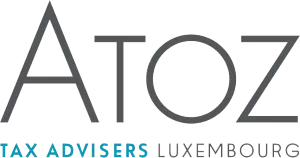OUR INSIGHTS AT A GLANCE
- On 11 May 2022, the European Commission released a Directive Proposal to address Debt-Equity bias.
- The Proposal is one of the targeted measures announced by the European Commission in May 2021 in its Communication that promote productive investment and entrepreneurship and ensure effective taxation in the EU.
- The Proposal lays down rules on the deduction, for corporate income tax purposes, of an allowance on increases in equity and rules on the limitation of the tax deductibility of exceeding borrowing costs. These rules apply to taxpayers that are subject to corporate income tax in one or more Member States, including permanent establishments in one or more Member State of entities resident for tax purposes in a third country. However, financial undertakings are exempt from those rules.
- Based on the current version of the Proposal, the new rules would apply from 1 January 2024>
On 11 May 2022, the European Commission released a Directive Proposal to address Debt-Equity bias (Proposal for a Council Directive on laying down rules on a debt-equity bias reduction allowance and on limiting the deductibility of interest for corporate income tax purposes, hereafter referred to as the "Proposal").
The Proposal follows the announcement made by the European Commission in its Communication on Business Taxation for the 21st century back in May 2021, which sets out both a long-term vision to provide a fair and sustainable business environment and EU tax system, and a tax agenda for the next two years with targeted measures that promote productive investment and entrepreneurship and ensure effective taxation. DEBRA is one of these targeted measures.
The Proposal introduces a Debt-Equity bias reduction allowance ("DEBRA") to encourage companies to finance their investments through equity contributions rather than through debt financing and so to mitigate debt bias. It lays down two separate measures that apply independently: On the one hand, rules on the deduction, for corporate income tax purposes, of an allowance on increases in equity and, on the other hand, rules on the limitation of the tax deductibility of exceeding borrowing costs.
Based on the current version of the Proposal, Member States shall adopt the Directive by 31 December 2023 at the latest and they shall apply the provisions of the Directive from 1 January 2024.
Scope of application of the Proposal
The Proposal applies to taxpayers that are subject to corporate income tax in one or more Member States, including permanent establishments in one or more Member State of entities resident for tax purposes in a third country.
However, the Directive Proposal does not apply to entities defined in the Proposal as Financial Undertakings. It is interesting to note that the definition of Financial Undertakings within the meaning of the Proposal is identical to the one included in the recent Proposal for a Council Directive laying down rules to prevent the misuse of shell entities for tax purposes and amending Directive 2011/16/EU. However, the definition of the Proposal is broader than the definition included in the ATAD.
Financial undertakings which are out of the scope of both the allowance on equity and the interest limitation rules introduced by the Proposal are the following undertakings within the meaning of the various EU Directives and Regulations:
- Credit institutions;
- Investment firms;
- Alternative investment fund managers ("AIFM"), including managers of EUVECA, EUSEF and ELTIFs;
- Management Companies of Undertakings for collective investment in transferable securities ("UCITS");
- Insurance undertakings;
- Reinsurance undertakings;
- Institutions for occupational retirement provision;
- Pension institutions operating pension schemes which are considered to be social security as well as any legal entity set up for the purpose of investment of such schemes;
- Alternative investment funds ("AIF") managed by an AIFM;
- UCITS;
- Central counterparties;
- Central securities depositories;
- Insurance or reinsurance special purpose vehicles;
- Securitization special purpose entities;
- Insurance holding companies or mixed financial holding companies;
- Payment institutions;
- Electronic money institutions;
- Crowdfunding service providers; and
- Crypto-asset service providers.
Allowance on equity
The first measure to be introduced by the Proposal (Article 4 of the Proposal) is an allowance on equity granted for 10 consecutive tax years, which is deductible from the corporate income tax base of corporate income taxpayers up to 30% of the taxpayer's EBITDA.
Allowance on equity = Allowance Base X Notional Interest Rate ("NIR")
Allowance base (net equity increase)
The allowance base is the difference between the net equity at the end of the current tax year and net equity at the end
of the previous tax year. This means that the allowance on equity is granted only for the sum of equity increases over a specific year and not for the overall equity.
Equity is defined by reference to Directive 2013/34/ EU (the "Accounting Directive") as the sum of paid-up capital, share premium account, revaluation reserve and reserves and profits or losses carried forward. Net equity is then defined as the difference between the equity of a taxpayer and the sum of the tax value of its participation in the capital of associated enterprises and of its own shares. This definition is meant to prevent cascading the allowance through participations
Notional Interest Rate ("NIR")
The NIR is the 10-year risk-free interest rate for the relevant currency, increased by a risk premium of 1% or, in the case of SMEs, a risk premium of 1.5%.
NIR = Risk Free Rate + Risk Premium
Risk Premium = 1% (or 1.5% for SMEs)
Risk-free interest rate is the risk-free interest rate with a maturity of 10 years, in which the allowance is claimed, for the currency of the taxpayer.
Risk premium is set at either 1% or at 1.5% in the case of taxpayers qualifying as small or mediumsized enterprises, to better reflect the higher risk premium they incur to obtain financing.
Maximum deductible amount
Once the allowance has been computed, each year, it will be necessary to double check whether the amount of the allowance does not exceed 30% of the taxpayer's earnings before interest, tax, depreciation and amortisation ("EBITDA") as the allowance is only deductible up to 30% of the taxpayer's EBITDA for each tax year.
Deductibility limited in time
The allowance on equity is deductible for 10 consecutive tax years, as long as it does not exceed 30% of the taxpayer's EBITDA.
Therefore, it is deductible in the year it was incurred (TY) and in the next successive nine years (TY+9). If, in the following year (TY+1), a new increase in a taxpayer's equity also qualifies for an allowance on equity, the new allowance on equity will also be deductible for the tax year it was incurred and the following nine years since its incurrence (until TY+10).
Carry forward mechanism
Taxpayers will be able to carry forward, without time limitation, the part of the allowance on equity that would not be deducted in a tax year due to insufficient taxable profit.
In addition, taxpayers will be able to carry forward, for a period of maximum 5 years, unused allowance capacity, where the allowance on equity does not reach the aforementioned maximum amount.
Implications in case of a subsequent equity decrease
If the allowance base of a taxpayer that has already benefitted from an allowance on equity under the rules of the Proposal, is negative in a given tax period (equity decrease), a proportionate amount will become taxable for 10 consecutive tax periods and up to the total increase of net equity for which such allowance has been obtained, unless the taxpayer provides evidence that this is due to losses incurred during the tax period or due to a legal obligation.
Anti-abuse measures (Article 5 of the Proposal)
The Proposal provides the following limitations which are anti-abuse measures aiming to ensure that the rules on the deductibility of an allowance on equity are not used for unintended purposes:
- To avoid multiplying the allowance on equity at group level: Exclusion from the allowance base of equity increases that originate from intra-group loans, intra-group transfers of participations or existing business activities and cash contributions under certain conditions.
- To prevent the overvaluation of assets or purchase of luxury goods for the purpose of increasing the base of the allowance: specific conditions for taking into account equity increases originating from contributions in kind or investments in assets.
- To make sure that the allowance does not apply to old equity converted into new equity as the result of the reorganisation of a group: Exclusion of the equity (or part thereof) that already existed in the group before the reorganisation.
Limitation to interest deduction
As a second measure, and independently from the allowance on equity, Article 6 of the Proposal introduces a limitation to the tax deductibility of exceeding borrowing costs. The measure would limit the deductibility of interest to 85% of the exceeding borrowing costs incurred during the relevant tax period. This new limitation to the deductibility of interest would apply together with the limitation already applicable in the EU (since 1 January 2019) under Article 4 of the Anti-Tax avoidance Directive ("ATAD").
Definition of exceeding borrowing costs
To define exceeding borrowing costs, reference is made to the definition provided in Article 4 of the ATAD, i.e. "the excess of borrowing costs over interest income and other economically equivalent taxable revenues".
As far as borrowing costs are concerned, even though no reference is made to ATAD in this respect, it is understood that the same definition should be applied, i.e. "interest expenses on all forms of debt, other costs economically equivalent to interest and expenses incurred in connection with the raising of finance as defined in national law, including, without being limited to,
- payments under profit participating loans,
- imputed interest on instruments such as convertible bonds and zero coupon bonds,
- amounts under alternative financing arrangements, such as Islamic finance,
- the finance cost element of finance lease payments,
- capitalised interest included in the balance sheet value of a related asset, or the amortisation of capitalised interest,
- amounts measured by reference to a funding return under transfer pricing rules where applicable,
- notional interest amounts under derivative instruments or hedging arrangements related to an entity's borrowings,
- certain foreign exchange gains and losses on borrowings and instruments connected with the raising of finance,
- guarantee fees for financing arrangements,
- arrangement fees and similar costs related to the borrowing of funds".
- Computation and how to apply both interest limitation rules (under ATAD and under the Proposal)
Given that interest limitation rules already apply in the EU based on Article 4 of the ATAD, taxpayers will apply the rule of Article 6 of the Proposal as a first step and then calculate the limitation applicable in accordance with article 4 of the ATAD.
As noticed above, since the definition of financial undertakings under ATAD is not the same as the one under the Proposal (the Proposal excludes more entities than ATAD does), some undertakings (e.g. Securitization special purpose entities within the meaning of EU Regulation No 2017/2402) will only be subject to the interest limitation rules of ATAD and not to the ones of the Proposal.
If the result of applying the ATAD rule is a lower deductible amount, the taxpayer will be entitled to carry forward or back the difference in accordance with Article 4 of ATAD.
By way of example, if a company has exceeding borrowing costs of 100, it should:
(1) First, apply Article 6 of the Proposal that limits the
deductibility to 85% of 100 = 85;
(2) Second, compute the amount that would be deductible under
Article 4 of the ATAD. If the deductible amount is lower, e.g. 80
(and subsequently the non-deductible higher, i.e. 20), the
difference in the deductibility, i.e. the additional non-deductible
amount (i.e. 85-80 = 5) would be carried forward in accordance with
the conditions of Article 4 of ATAD, as transposed in national
law.
The outcome for the company would be that that 15 (100 - 85) of interest borrowing costs are non-deductible and a further 5 (85 – 80) of interest borrowing costs are not deductible but can be carried forward.
Considerations regarding Luxembourg companies
How a business finances its operations is an important business decision that depends on a range of factors. While the deductibility of interest expenses is one factor to be considered, the decision as to whether a company should be financed by equity or debt is generally not tax driven and there are a number of good commercial reasons why intra-group loans can be preferable to a contribution of equity.
The question arises as to what the impact of the Proposal would be on Luxembourg companies that perform holding and financing activities.
When Luxembourg companies hold participations qualifying for the Luxembourg participation exemption regime, interest expenses incurred in relation to the financing of such participation are only deductible if certain conditions are met. When interest expenses would otherwise be deductible, the non-deductibility of 15% of the exceeding borrowing costs may result in a reduction of deductible interest expenses. However, as the income derived from qualifying participations should be tax exempt, the impact of this measure would be limited.
As regards financing activities, Luxembourg companies should realise an arm's length remuneration. Consequently, Luxembourg finance companies should realise a positive finance margin (i.e. the company should realise more interest income than it incurs interest expenses). Here, in the absence of exceeding borrowing costs, the Proposal would not result in the non-deductibility of part of the interest expenses.
Nevertheless, when Luxembourg companies invest into assets (or perform business activities) that generate taxable income that cannot be classified as interest income or economically equivalent revenues, the 15% non-deductibility of interest expenses may have a severe impact on the overall tax profile of the investment. Therefore, the developments in regard to DEBRA need to be carefully monitored by Luxembourg taxpayers.
Critical review
The Proposal raises a number of issues, including, in particular:
- Is the allowance on equity in line with transfer pricing principles? It can be assumed that a risk premium of only 1% (or 1.5%) to be added to the risk free rate should hardly be consistent with the arm's length principle.
- The non-deductibility of 15% of the exceeding borrowing costs may likely be inconsistent with the Constitution of many EU Member States given that taxpayers should, as a very fundamental principle, be able to deduct their costs.
- The Proposal would result in significant complexity related to:
- the interaction with the interest limitation rules of ATAD,
- the determination of the allowance on equity, including intricate anti-abuse provisions,
- the 10 year adjustment period that would require tracking on an annual basis, and
- the carry-forward mechanism.
- Given the complexity of the allowance computation and the need to track it over 10 years, why not making the system optional to taxpayers (the wording used in the Proposal seems to suggest that the allowance is granted automatically with no possible op-out by the taxpayers concerned).
Next steps
Based on the current version of the Proposal, Member States shall adopt the Directive by 31 December 2023 at the latest and they shall apply the provisions of the Directive from 1 January 2024. However, since we are at a very early stage of the procedure, it remains to be seen whether and if so, how quickly, all EU Member States will manage to agree on the Proposal. Therefore, both the specificities of the new rules and the time as from which these rules would become applicable remains to be confirmed.
The content of this article is intended to provide a general guide to the subject matter. Specialist advice should be sought about your specific circumstances.


